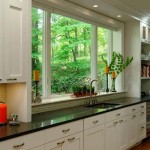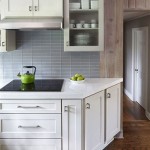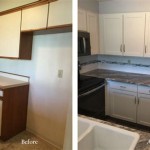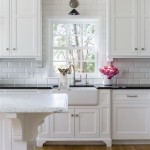Color Combinations for Kitchen Cabinets: A Guide to Choosing the Perfect Palette
The kitchen is often considered the heart of the home, a place where families gather, meals are prepared, and memories are made. As such, it's crucial to create a space that is both functional and aesthetically pleasing. One of the most important design elements that contributes to the overall feel of a kitchen is the color of the cabinets. With so many options available, choosing the right color combination can seem overwhelming. This article aims to simplify the process by providing a comprehensive guide to color combinations for kitchen cabinets, offering insights into popular choices, design principles, and practical considerations.
1. Understanding Color Psychology and its Impact
Color psychology plays a significant role in the design of any space, and the kitchen is no exception. Different colors evoke specific emotions and create distinct atmospheres. For example, warm colors like red and yellow can stimulate appetite and create a sense of energy, while cool colors like blue and green can promote relaxation and tranquility. When choosing cabinet colors, it's important to consider the desired mood and functionality of the kitchen.
For a vibrant and lively kitchen, consider incorporating bold colors like red, orange, or yellow. For a more serene and calming space, opt for cooler hues like blue, green, or gray. Neutral colors like white, black, and beige offer a timeless and versatile backdrop that can be easily accessorized with different color palettes.
2. Classic and Contemporary Color Combinations
While personal preferences and individual styles vary greatly, certain color combinations have consistently proven popular and effective in kitchen design. These combinations offer a balance of aesthetics, functionality, and timeless appeal.
a. White Cabinets: A Timeless Classic
White cabinets are a perennial favorite, offering a clean, crisp, and airy aesthetic. They create a sense of spaciousness, reflect light, and provide a versatile backdrop for various countertop and backsplash materials. White cabinets work well with a range of color palettes, from bold and vibrant to soft and subtle.
b. Gray Cabinets: Modern and Versatile
Gray cabinets have gained popularity in recent years, offering a balance of sophistication and practicality. They are a versatile option that complements a wide range of styles, from contemporary to traditional. Gray cabinets can be paired with a variety of countertop materials, including white quartz, black granite, and warm wood tones.
c. Two-Tone Cabinets: Adding Depth and Interest
Two-tone cabinets offer a dynamic and visually appealing option. This approach involves using two contrasting colors for the upper and lower cabinets, creating a sense of depth and interest. Popular two-tone combinations include white upper cabinets with dark lower cabinets or gray upper cabinets with a bolder accent color for the lower cabinets.
3. Practical Considerations and Tips for Choosing Cabinet Colors
Beyond aesthetics and personal preferences, there are several practical considerations to keep in mind when selecting cabinet colors for your kitchen.
a. Natural Light and Room Size
The amount of natural light in your kitchen plays a significant role in how colors appear. Darker cabinets can make a small kitchen feel cramped, while lighter colors can create a sense of spaciousness. Consider the existing lighting conditions and choose colors accordingly.
b. Countertop and Backsplash Material
The countertop and backsplash materials will influence the overall look and feel of the kitchen. Choose cabinet colors that complement these elements, creating a cohesive and harmonious design. For example, light cabinets pair well with darker countertops, while darker cabinets can enhance the elegance of light countertops.
c. Flooring and Wall Color
The flooring and wall colors also impact the overall design. Choose cabinet colors that complement the existing flooring and wall colors, creating a balanced and visually pleasing space. Consider using a color wheel to identify complementary or analogous colors for a harmonious color scheme.
Ultimately, the best color combination for your kitchen cabinets depends on personal preferences, design style, and practical considerations. By understanding color psychology, exploring popular combinations, and carefully considering practical factors, you can create a kitchen that not only meets your functional needs but also reflects your unique style and personality.

35 Modular Kitchen Colour Combinations For Every Size By Livspace

15 Kitchen Color Combinations For A Modern Cooking Place

35 Modular Kitchen Colour Combinations For Every Size By Livspace

A Guide To Kitchen Colour Combinations Design Cafe

15 Kitchen Color Combinations For A Modern Cooking Place

20 Trendy Colour Combinations For Kitchen 2024 Modern Cabinet Design Interior Interiors

8 Awesome And Trendy Colour Schemes For Your Kitchen

Top Modular Kitchen Cabinet Color Combination Design Ideas 2024 Home Decoration Plans Modern Small

30 Kitchen Cabinets With Contrasting Colour Combinations
Best Kitchen Colour Combinations Orientbell Tiles
Related Posts








